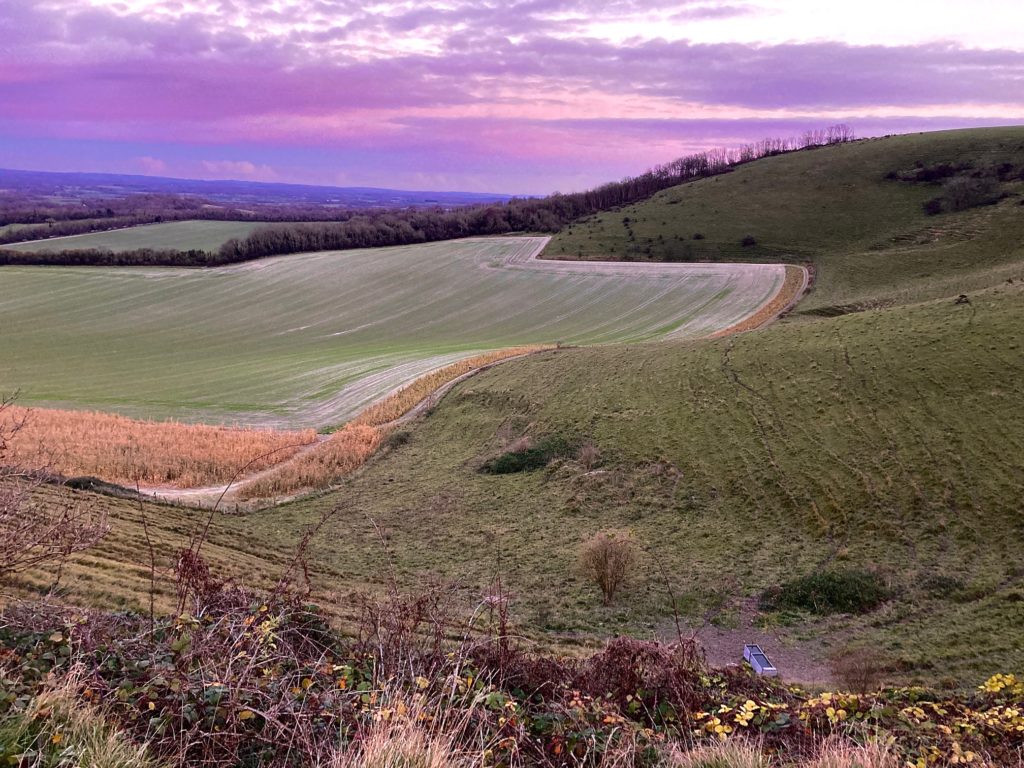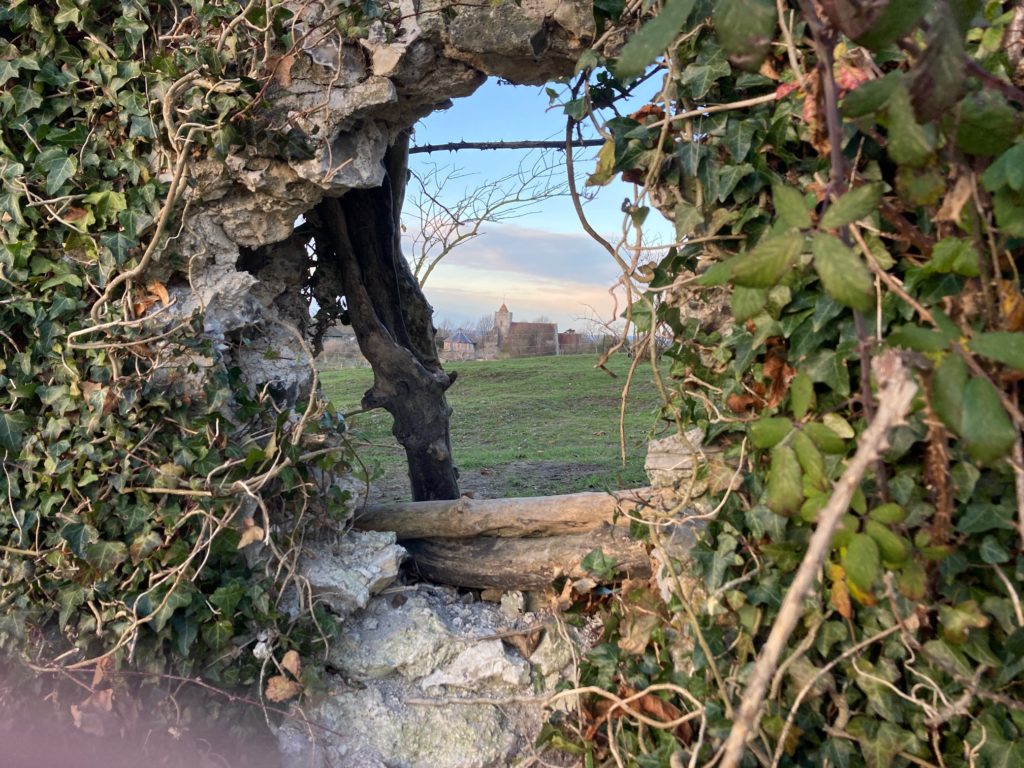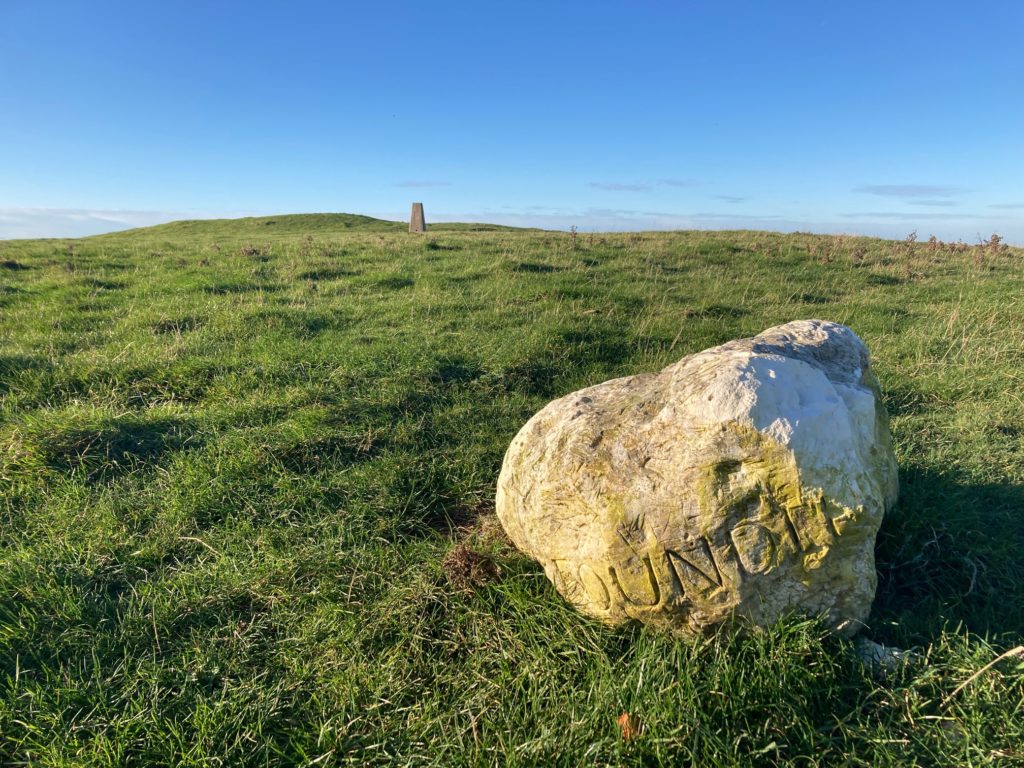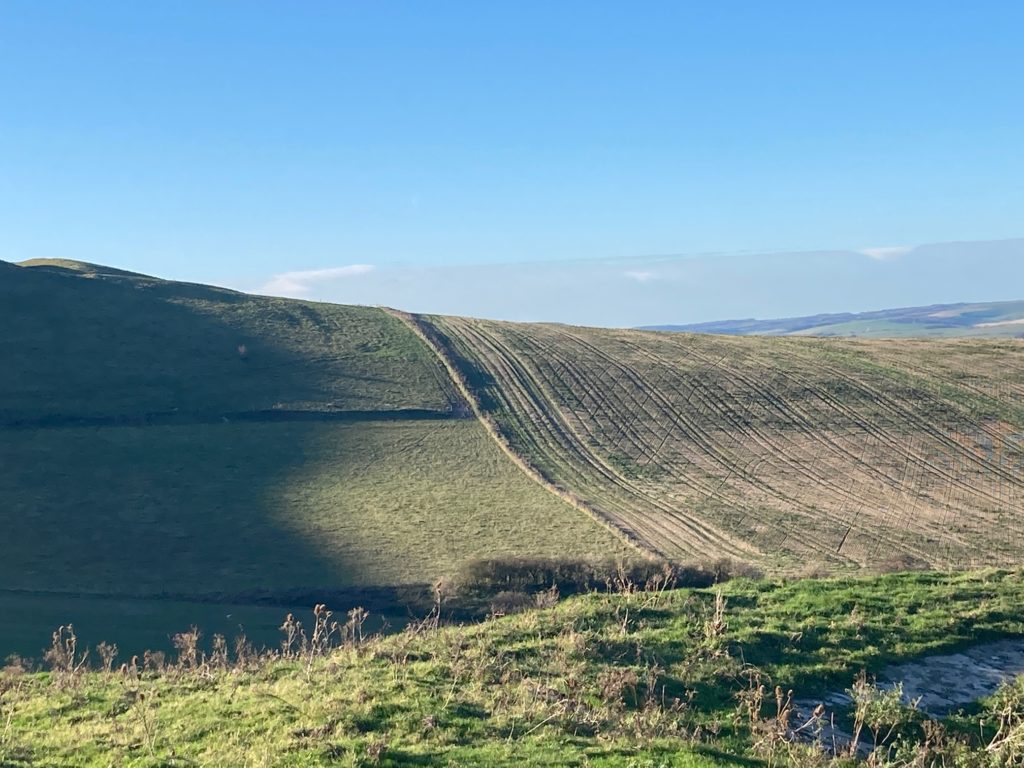Tracing Diverse Paths on the South Downs: Mark Hooper finds space to spread his mind out in the Sussex domain of ancient oyster farmers and the Bloomsbury Set.

There is something about the South Downs that draws you back again and again. I go there a lot. I ended up living in Kent because it was close enough to visit one particular section of the Downs, where it rises as a ridge just outside Lewes in West Sussex and stretches eastwards from the village of Firle towards Alfriston and Wilmington. It’s a fascinating landscape, littered with history and mystery. It has inspired countless artists, poets, writers, musicians and thinkers over the years — most of whom it seems visited Charleston at some point, the picturesque farmhouse nestled in the lee of Firle Beacon that was once a countryside outpost for the Bloomsbury Set.
This was where the artist Vanessa Bell settled with her husband, the critic Clive Bell, in 1916, together with fellow artist Duncan Grant and his lover, the writer and publisher David ‘Bunny’ Garnett. The farmhouse had been discovered by Vanessa’s sister Virginia Woolf, who lived in nearby Rodmell and wrote to tell them she had found the perfect home for them. (Due to the men being conscientious objectors to the Great War, they needed to provide work of ‘national importance’ — and had settled on being farm labourers.) ‘It will be an odd life,’ Woolf wrote, ‘but it ought to be a good one for painting.
By Edwardian standards, it certainly was an odd life. Almost a hundred years before the term existed, Charleston was an outlier for the LGBT+ community. In an age when ‘committing a homosexual act’ was an imprisonable offense, here was a fluid, open household that ignored the rigid sexual and societal mores of the day.
But the blurring of boundaries didn’t end with sexuality. Charleston was also a pioneer in introducing Post-Impressionism to the stuffy English art establishment. Alongside their wider coterie of aesthetes was the revolutionary economist John Maynard Keynes who, following a mission to acquire art for the National Gallery in 1918, once arrived at the farmhouse during a downpour, announcing nonchantly that he’d hidden a Cézanne in the hedge. Another was the artist and critic Roger Fry, one of the Bloomsbury inner circle, who organised the groundbreaking 1910 show Manet and the Post-Impressionists at London’s Grafton Galleries — the first time Gaugin, Matisse, Van Gogh and Cézanne had appeared at a major exhibition in England. It was not an instant success. Fry was widely derided as ‘mad’ and ‘a subverter of morals’.
In fact, it went deeper than that — the very concept of art was challenged by Grant and Bell, whose habit of painting anything that wasn’t nailed down — and plenty that was — reveals how they ignored such distinctions as ‘decorative’ and ‘fine’ art. Bedsteads, mantelpieces, tables, lampshades, walls, chairs: everything was fair game at the farmhouse. Fry even launched the Omega Workshops in London’s Fitzroy Square, a furniture and interior design company intended to challenge the neighbouring Heal’s, with Grant and Bell as directors.
Charleston now plays host to a hugely popular annual literary festival. I went there one year to hear the artist-provocateur Grayson Perry declare it ‘the place that launched a thousand kitchen makeovers’ — to audible gasps from the middle class audience, who had no doubt just ordered their tins of Charleston Gray from their favourite overpriced paint company.

But I’m digressing (which, after all, is the whole point). There is a fantastic circular walk that starts and ends in the car park at the top of the hill near Firle Beacon, traversing the ridge before descending into Charleston, then crossing several fields to arrive (preferably around lunchtime) at the Ram Inn, Firle — one of the best pubs in south-east England.
I’ve done this walk — or variations thereof — many times. Sometimes alone, sometimes with family, sometimes with my oldest and best friends. I took my brother Andy up here once during a visit from his own, very different hill in San Francisco. I’ve been here with Kev, and with Becks, both of whom know me almost as well as my brother. It’s a great place to walk and talk, to have inspiring conversations and make plans together. But the best moments are always when they wander off a little on their own to stand in silence, taking in the view below, alone with their thoughts.
There are times in the Spring when parts of the pathway are still crusted in frost at midday as the sun struggles over the hilltop. Sometimes the wind is so strong you can’t do anything but laugh and stagger back to the car for it to pass. But most of the time, the spine of Firle Beacon is basked in the most incredible light, while the ploughed fields below are straight out of an Eric Ravilious painting.
I walked here once with two brilliant women — the sculptor Jo Sweeting and the writer Louisa Thomsen Brits — who explore language and landscape in fascinating ways. They showed me the chalkstone boulder that, together with author Tanya Shadrick, they had found near Firle Beacon, into which Sweeting had carved several words from the Sussex dialect — including ‘BONE-KEN’ (ancestral wisdom); and ‘FOUNDLE’ (a found object). En route, Thomsen Brits had pointed out how the white debris that regularly litters the Downs isn’t made up simply of chalk but also often contains fragments of oyster shells. Given how far inland this is (and the fact that the coastal area is famously being eroded rather than accreting here — witness the houses falling into the sea at Birling Gap), she explained that this is actually a sign of Roman settlers, who introduced oyster farming in England in the 1st Century AD and would use the South Downs Way as their major thoroughfare in the region.

Part of my enjoyment of walking is this sense of roaming through history too. But to what end? What do I hope to find? There’s always a danger of wallowing in the safety of the past — of being one of those who hanker for the mythical ‘good old days’ and are a bit too ready to tell you about the Anglo Saxons. Maybe I’m guilty of that too — of using my past as a crutch. But, when I hang out with friends from my youth, I’m in the present. It’s not about looking back, but moving forwards, being with people whose company I’m relaxed in and who constantly surprise me and help me to see things in new and interesting ways. And that’s how I see history. We get to interpret it in our own way. It teaches us about today, and how to look at it with a new perspective. I feel like I’m constantly learning from it. There were progressives in the past too, after all — that’s how history happens.
So by retracing the footsteps of the Edwardians and Romans and Ancient Britons who’ve been this way before, we can let them show us alternative paths. Sometimes it’s not always about what-ifs and what-could-bes, either: sometimes it’s about uncovering suppressed truths. In today’s climate, we can still learn a thing or two about individual freedom from the Bloomsbury Set (who, as Dorothy Parker famously described, ‘lived in squares, painted in circles and loved in triangles’). And as for those Romans trailing oysters in their wake — for two decades of their time here (to be exact, between 193-211AD), they — we — were ruled by the emperor Septimius Severus, an African. This isn’t a secret. His head appears on the coins of countless hoards found across Britain (and I do mean Britain — Severus ventured further north than any other Caesar, way beyond Hadrian’s Wall). He even gets a namecheck in the TV show Detectorists. So why doesn’t he appear in the curriculum alongside Julius Caesar and Hadrian? When he died (in York), the Roman Empire was at the largest it would ever be — over five million square kilometres, stretching from the coast of modern Portugal eastwards as far as the Caspian Sea, and from Caledonia to North Africa (incorporating his birthplace in modern-day Libya). Which arguably makes him the most powerful African in the history of Europe. Of course, it’s ridiculous to impose modern-day concepts of race on the Ancient world (you get the impression Septimius Severus would have had little time for political correctness anyway). But it’s something for the swivel-eyed, lobster-tanned Little Englanders to think about that next time they sing ‘Britons never, never, never shall be slaves.’

See what I mean? You head off on one path and find yourself disappearing down tangents. But always moving forwards. As Virginia Woolf put it: ‘I am extremely happy walking on the Downs…I like to have space to spread my mind out in.’